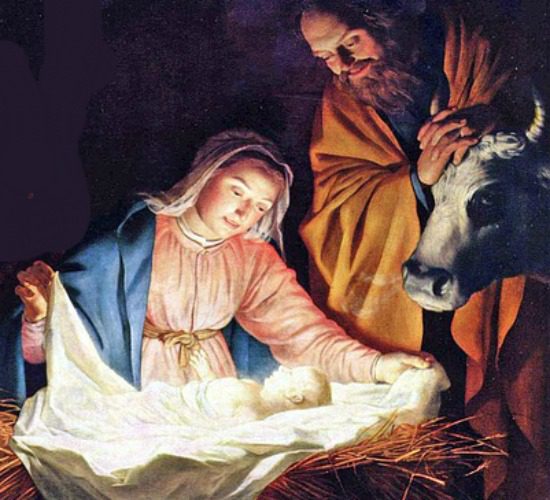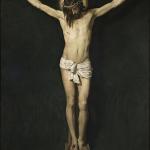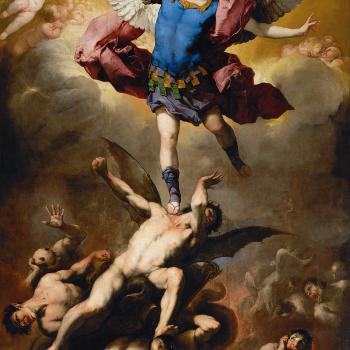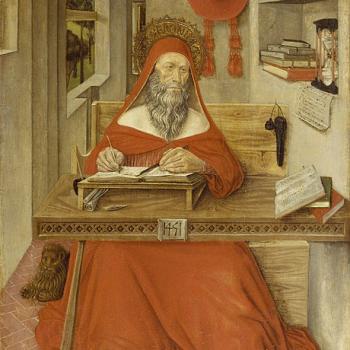Chapter 7 of my book (available for free online), Inspired!: 198 Supposed Biblical Contradictions Resolved. See the Introduction and ch. 1: How Do Atheists Define a “Biblical Contradiction”? All Bible passages RSV unless otherwise noted.
135. Why do only Matthew (1:18, 20, 23) and Luke (1:35) know of the virgin birth; shouldn’t we expect other writers to mention this, too?
Arguments from “expectation” or plausibility are not, strictly speaking, the same as establishing a logical contradiction. This is the argument from silence, too, which is always weak in and of itself. Two Gospels mentioning it is more than enough. The other two didn’t. But who cares? Why must all four mention any particular thing? They all have to do with Jesus and his life. That is what anyone should “expect” to see in them. Details and absences and inclusions can differ in innumerable ways.
136. Did Joseph, Mary, and Jesus flee to Egypt during Herod’s slaughter of the innocents (Matt. 2:13-16) or stay in Bethlehem (Luke 2:21-39) for temple rituals (with no such slaughter being mentioned)?
The two passages refer to completely different time-periods, and so, as a result, are not contradictory. Luke 2:21-39 refers to the time when Jesus was between eight and forty days old (when purification rites were done). Matthew 2:13-16, on the other hand, is during the visit of the Wise Men (magi), which is when Jesus was (based on other textual deductions) 1-2 years’ old. This is when Herod ordered the slaughter. Jesus was by then a toddler. The word for child in Matthew 2:8-9 is paidion: which meant in biblical Greek: “young child, perhaps seven years old or younger.” The magi visit a “house” (Matt. 2:11), not a baby in a “manger” (Luke 2:7, 12, 16), in a place which was, in fact, very much a cave (I’ve been there). No angels (Luke 2:9-10, 13-15), shepherds (Luke 2:8, 15-18), or animals are in sight.
137. Was Jesus born in Bethlehem (Luke 2:4-7) or Nazareth? Mark (1:9) seems to indicate that Jesus was born in Nazareth, since it declares: “Jesus came from Nazareth of Galilee.”
This atheist’s “argument” is that Mark calls him “Jesus of Nazareth” three times (1:24; 10:47; 16:6) and notes that Nazareth was his hometown. So what?! It was his hometown from the age of 1 or 2. It doesn’t follow that he was born there or that Mark’s simply not dealing with his birth means that he denied that Bethlehem was where he was born. This is the well-known “argument from silence” fallacy. Luke also has the phrase “Jesus of Nazareth: three times (4:34; 18:37; 24:19), yet clearly at the same time records that he was born in Bethlehem. In all appearances of “Nazareth” in conjunction with Jesus, never once does it say that he was born there. The Bible says that he “dwelt” there (Matt. 2:23), that he was “from” there (Matt. 21:11; Mark 1:9), that he was “of” Nazareth (Matt. 26:71; Mark 1:24; 10:47; 16:6; Luke 4:34, 18:37; 24:19; John 1:45; 18:5, 7; 19:19; Acts 2:22; 3:6; 4:10; 6:14; 10:38; 22:8; 26:9), “out of” Nazareth (John 1:46), “brought up” there (Luke 4:16), that Jesus called Nazareth “his own country” (Luke 4:23-24). Not one word about being born in Nazareth occurs in any of those 28 references. It’s talking about his hometown, where he was always known to live, prior to his three-year itinerant ministry. In the Bible, people were generally named after the places where they were from. The Bible states that he was “of” or “from” Nazareth because that was his hometown. And it asserts that he was born in Bethlehem; never that he was born in Nazareth.
138. Why do Luke and Matthew clash as to who first visited Jesus: the shepherds (Luke 2:16) or the wise men (Matt. 2:11), and why doesn’t either account mention the other early witnesses?
Neither Matthew nor Luke claim that the shepherds or the wise men (magi) were the “first” to witness the baby Jesus. Right after Luke reports that Mary gave birth to Jesus (Luke 2:7), it’s reported that angels inform the shepherds of the birth of Jesus on that very night (Luke 2:8-14). Then the shepherds went to see baby Jesus (Luke 2:15-16). We know that this was the night of Jesus’ birth, complete with his lying in the famous “manger” (Luke 2:7). But nothing is said about their being the first visitors. They may have been, but we can’t know for sure from the text. They could have been the first or the fifth, or the only ones on that night. From the text we can’t determine those things. And there is no imaginary obligation for a text to mention any or all other visitors too (it’s absurd to “demand” that). All we know for sure is that they seem to have visited shortly after he was born. The wise men, on the other hand, didn’t visit on the night of Jesus’ birth. When the magi stopped by, Jesus was a toddler. The word for child in Matthew 2:8-9 is paidion: which means “younger child”. “Babe” on the other hand (Lk 2:12, 16 in RSV and KJV) is brephos: which means: “an unborn or a newborn child” and is used of children in the womb in Luke 1:41, 44. In Luke 2, it’s the day of Jesus’ birth (Luke 2:7, 11). The magi visit a “house” (Matt. 2:11), not a baby in a “manger” (Luke 2:7, 12, 16), in a place which was, in fact, very much a cave (I’ve been there). There are no angels (Luke 2:9-10, 13-15), shepherds (Luke 2:8, 15-18), or animals are in sight. The star of Bethlehem is a factor in Matthew’s account only. Luke never mentions it. Commentators generally believe that Jesus was two years old or younger when the wise men visited, but in any event, not a newborn. Therefore, we definitely know that the shepherds visited Jesus before the wise men did (and likely were the first visitors). In any event, there is no demonstrable contradiction.
*****
*
Photo Credit: portion of the 1622 painting, Adoration Of The Shepherds (Gerard van Honthorst) [public domain / Wikimedia Commons]
Summary: Ch. 7 of Dave Armstrong’s book, “Inspired!”: in which he examines 198 examples of alleged biblical contradictions & disproves all of these patently false claims.














